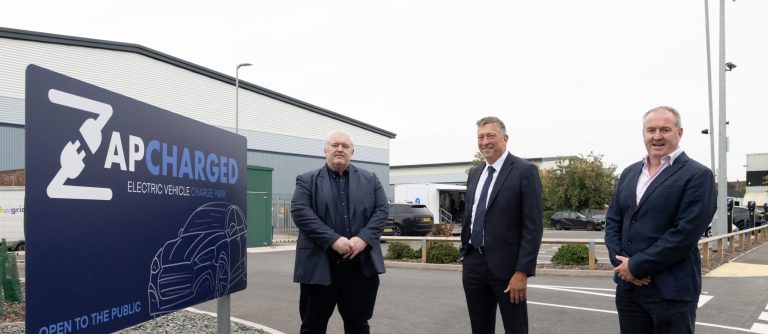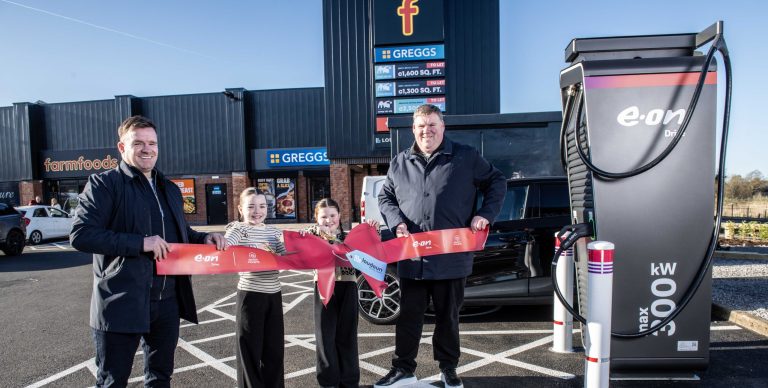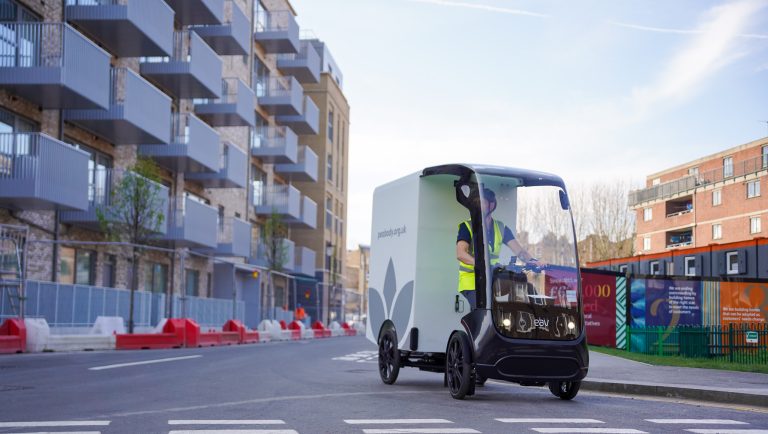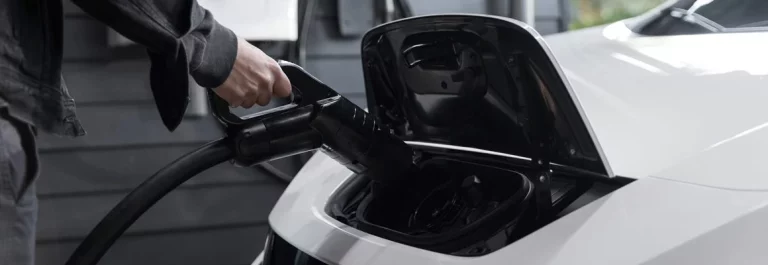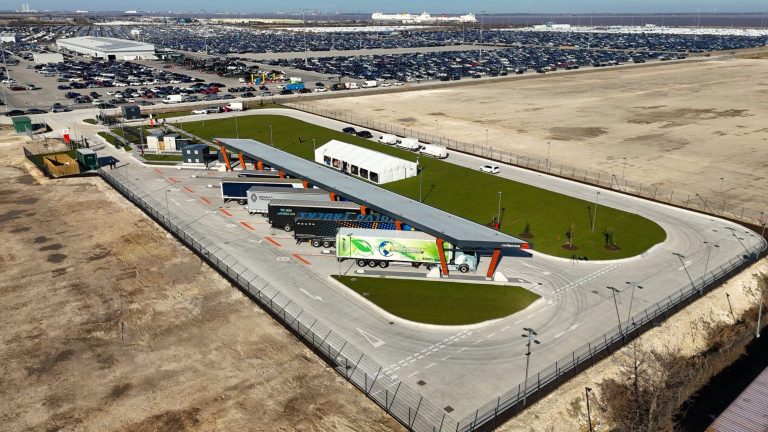Multimillion-pound investment brings up to 60 jobs, Scotland-leading ultra-rapid EV charging points and a confidence boost for the Irvine Valley East Ayrshire’s Irvine Valley has received its most significant economic boost in decades with the formal launch of the new Loudoun Retail Park in Galston last Thursday (13 November). In addition to retailers Greggs and Farmfoods which are already drawing crowds, energy giant E.ON has installed eight 300 kW EV charging bays which are amongst the most powerful and fastest in Scotland. The development, led by local businessmen Gareth Downie and Paul McIvor of Downie & McIvor Capital, represents a multimillion-pound investment and is already delivering on its ambition to revitalise confidence in the potential of the Irvine Valley with modern retail, new employment and improved amenities. Farmfoods’ state-of-the-art 11,000 sq ft store features its newest format, while Greggs’ 1,500 sq ft unit, includes plans to launch Just Eat deliveries shortly. Both retail offerings have already proved popular with higher-than-forecast footfall. Together, the stores are expected to create dozens of jobs and retain everyday spending within the Irvine Valley rather than obliging residents to travel to Kilmarnock. In addition, the development will boost local contracting jobs in ongoing maintenance and landscaping work. The site’s eight E.ON ultra-rapid 300 kW EV charging bays also puts Galston firmly on the map since it is amongst only a handful of locations in Scotland with such levels and rapidity of charging capability. Drivers can charge from around 10% to 80% in under 20 minutes, creating a new “stop and shop” destination for electric vehicle users. More than 24,000 vehicles pass the site every day, with initial data showing a further increase in traffic since opening. Loudoun Retail Park has over 100 parking spaces, laid out to maximise accessibility including dedicated disabled, parent and child bays, and a separate zone for EV charging. Gareth said: “This is genuinely the most significant development for the Irvine Valley in thirty years, not only in terms of private sector investment, but in the impact it will have on jobs, confidence and the quality of life in our community. “Our aim from the outset was to bring proper amenities, modern retail and real economic activity back into the Valley, and it is already doing exactly that. “Historically, the Irvine Valley has been largely overlooked by national retailers, but this is now changing. The successful opening of Loudoun Retail Park demonstrates the strength of the local market and should act as a catalyst for further investment across the wider area. “It also opens the door for delivery platforms such as Just Eat to serve national retailers in the Valley properly for the first time, creating further local employment and economic activity. “Both Paul and I grew up here, so this is personal. We are grateful for the encouragement we have received from East Ayrshire Council and are extremely proud of what we have created and the positive difference it is already making. “We are already getting lots of interest in the remaining 3,000 sq ft of roadside retail space which can be split into two units, plus our new 2,500 sq ft modern two-storey office building with its own entrance and foyer, whose occupiers will benefit from free parking, on-site retail and the ultra-rapid EV chargers.” Paul said: “We wanted this to be a development that genuinely supports the local economy throughout its lifespan, from the contractors building it to the people working and shopping here. “Throughout the construction phase, the project employed a broad range of local contractors and suppliers, supporting jobs locally, and we aim to continue that theme. The early response from local people has been fantastic, and we’re only just getting started.” Gareth added: “This isn’t just about a retail park; it’s about the bigger picture. The jobs, footfall and amenities are important, but the real legacy will be the confidence it creates for further private investment across the Irvine Valley.” All retail and office enquiries are being handled by Stephen McParlane at McParlane Property. Loudoun Retail Park website: www.loudounretailpark.com Building, Design & Construction Magazine | The Choice of Industry Professionals
